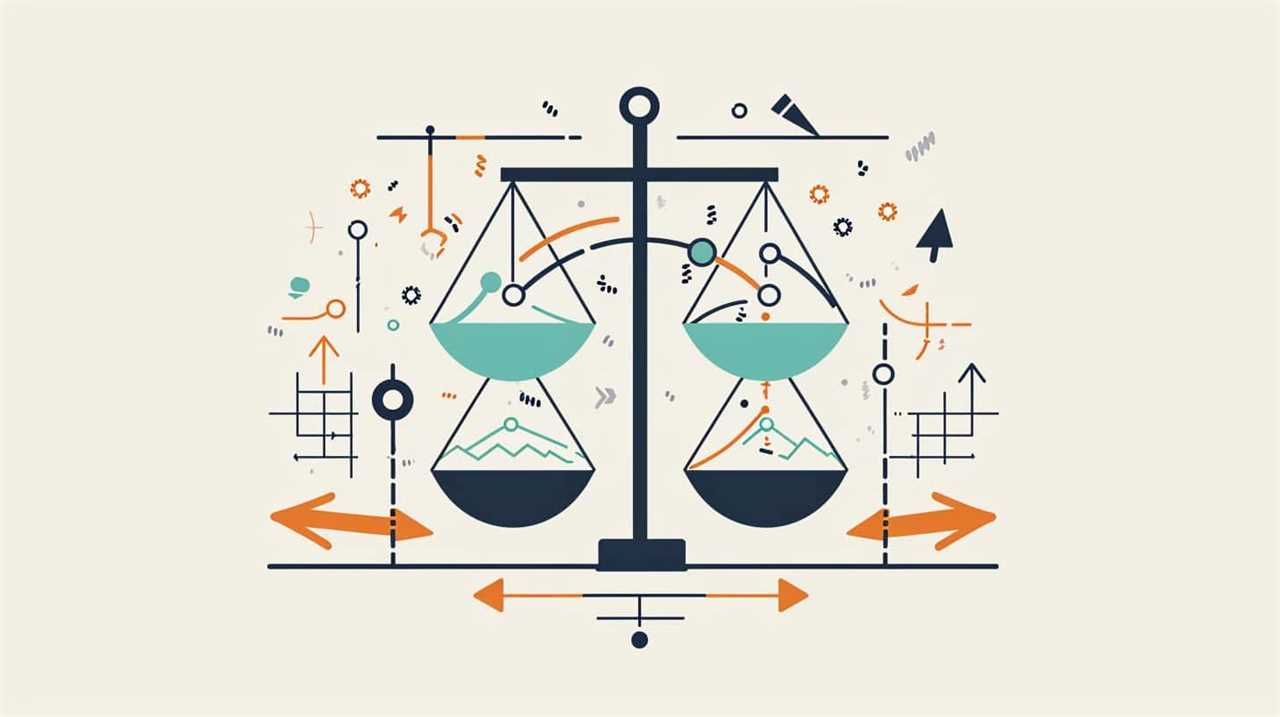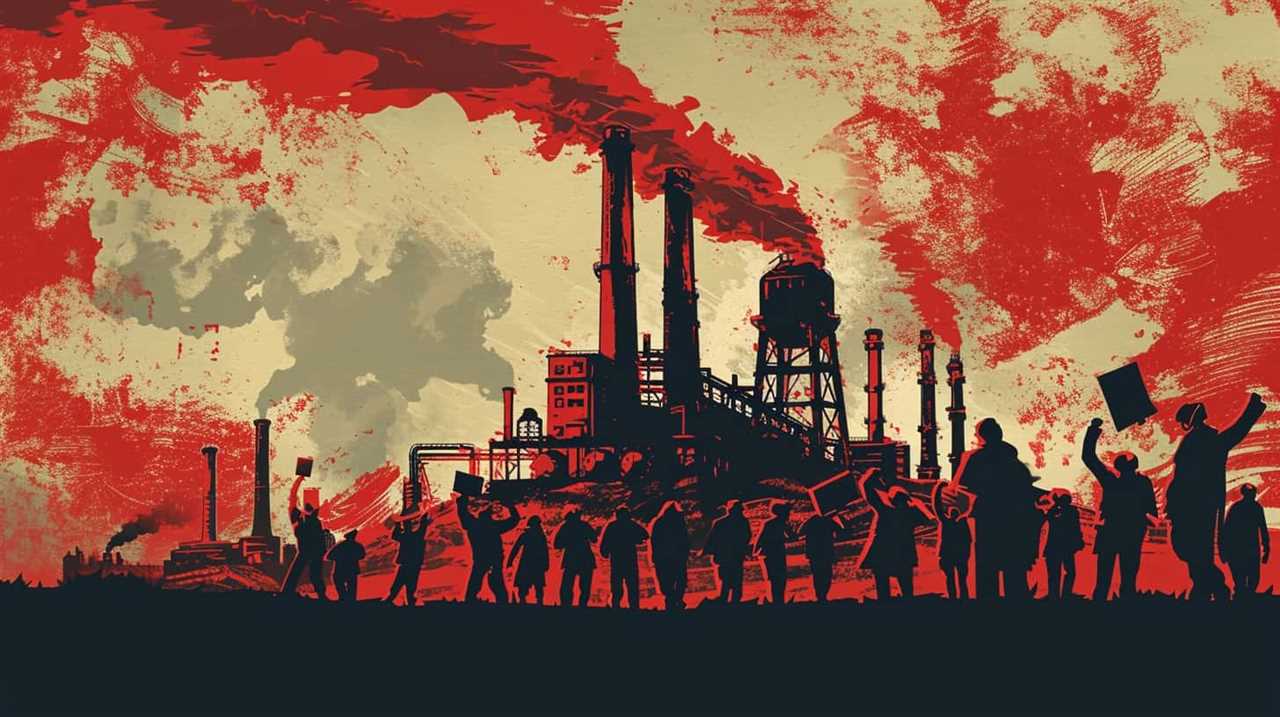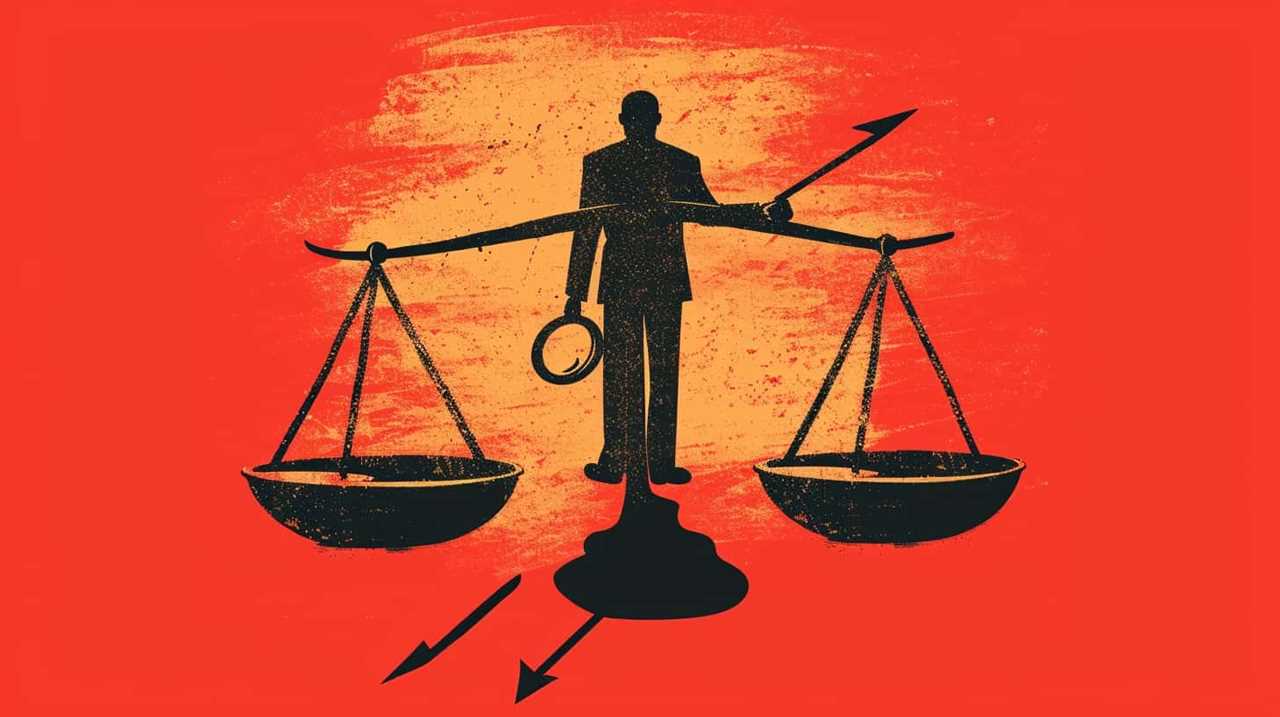Economic Theories and Philosophers Quotations
How Milton Friedman’s Policies Shaped Economies

During the rise of economic innovation, Milton Friedman’s strategies played a crucial role in shaping global economies. His revolutionary concepts and confidence in the effectiveness of free markets drove nations towards success and advancement. By advocating for deregulation, Friedman led the way for economic growth, sparking a revolution in nations such as Chile, where his policies led to positive results.
His economic theory emphasized the limited role of government, allowing markets to flourish and individuals to thrive. Post-Soviet nations also experienced the impact of Friedman’s ideology, as they undertook bold economic reforms to revitalize their struggling economies. Additionally, Friedman advocated for education reform, promoting school choice to empower individuals and foster innovation.
While his policies garnered praise, criticisms also emerged, challenging the effectiveness and equity of his economic prescriptions. Nonetheless, Milton Friedman’s imprint on economies remains indelible, forever shaping the trajectory of nations towards progress.
Key Takeaways
- Advocated for free markets and limited government intervention
- Championed monetarism and the role of controlling the money supply in stabilizing economies
- Led to significant deregulation efforts in various industries, promoting economic expansion
- Emphasized the benefits of economic freedom, efficiency, innovation, and overall prosperity
Background on Milton Friedman
Why did Milton Friedman become influential in shaping economies?
Milton Friedman’s impact on the field of economics can’t be overstated. His groundbreaking economic theories revolutionized the way policymakers and economists approach the study of markets and government intervention. Friedman’s ideas centered around the concept of free markets and limited government intervention, advocating for individual freedom and choice as the driving forces behind economic growth.
One of Friedman’s most influential theories was his advocacy for monetarism, which argued that changes in the money supply were the primary drivers of economic fluctuations. He believed that controlling the money supply was crucial in maintaining stable prices and preventing inflation. This theory gained widespread acceptance and influenced central banks around the world in their monetary policy decisions.
Another key aspect of Friedman’s economic theories was his strong opposition to government regulation and intervention in the economy. He believed that free markets were the most efficient allocators of resources and that government interference only stifled economic growth and innovation. This perspective resonated with many policymakers and led to significant deregulation efforts in various industries, such as telecommunications and transportation.
Friedman’s ideas continue to shape economic policies and debates to this day. His emphasis on individual freedom, free markets, and limited government intervention has inspired generations of economists and policymakers to rethink traditional approaches to economic governance. As we explore the influence of Milton Friedman’s ideas, it becomes clear that his impact on shaping economies is undeniable and continues to drive innovation and progress.
The Influence of Milton Friedman’s Ideas
Continuing from the previous subtopic, Milton Friedman’s ideas have had a profound influence on shaping economies worldwide. His theories and principles have left a lasting impact on economic policies across the globe. Let’s delve deeper into the influence of Friedman’s ideas by examining their effect on global economies and their impact on economic policies.
To better understand the reach of Friedman’s influence, let’s take a look at the table below, which highlights some key aspects of his ideas and their implications:
| Idea | Influence on Global Economies | Impact on Economic Policies |
|---|---|---|
| Monetarism | Emphasized the role of monetary policy in controlling inflation and stabilizing economies | Led to a shift towards central banks focusing on controlling the money supply and targeting inflation as a primary objective |
| Free Market Capitalism | Advocated for minimal government intervention and free trade | Resulted in the liberalization of markets, deregulation, and the promotion of international trade |
| School Choice | Promoted competition and choice in education systems | Led to the implementation of voucher programs and charter schools, giving parents more options in selecting their children’s education |
| Negative Income Tax | Proposed a guaranteed income for all citizens, replacing traditional welfare systems | Influenced discussions on social welfare and income redistribution, leading to the introduction of programs like the Earned Income Tax Credit (EITC) |
| Floating Exchange Rates | Argued for flexible exchange rates determined by market forces | Led to the abandonment of fixed exchange rate regimes and the adoption of floating exchange rates as a means of promoting international trade |
Friedman’s ideas have not only shaped economic policies but have also sparked innovation and debate, challenging traditional approaches and paving the way for new solutions. As economies continue to evolve, his influence remains significant in shaping the path of global economic development.
Friedman’s Beliefs on Free Markets
Friedman’s beliefs on free markets had a significant impact on economies worldwide. His pro-market ideology emphasized the benefits of economic freedom, arguing that it leads to efficiency, innovation, and overall prosperity.
Friedman believed that government interference in the market should be limited, as it can distort prices, create inefficiencies, and hinder economic growth. These ideas continue to shape economic policies and debates today, with proponents arguing for minimal government intervention and a reliance on market forces.
Pro-Market Ideology Impact
Milton Friedman’s pro-market ideology greatly influenced economies by championing the principles of free markets. His belief in the power of free markets to allocate resources efficiently and promote economic growth had a significant impact on income inequality and monetary stability.
Friedman argued that free markets allow individuals to pursue their own self-interest, leading to the creation of wealth and opportunities for all. He believed that government intervention in the economy, such as price controls and regulations, hindered market efficiency and distorted the allocation of resources.
Economic Freedom Benefits
As we delve into the discussion on economic freedom benefits, it becomes evident that Friedman’s beliefs on free markets had a profound impact on shaping economies. Here are four key benefits of economic freedom that highlight the positive effects of Friedman’s ideology:
- Increased economic growth: Economic freedom allows for competitive markets, innovation, and entrepreneurship, leading to higher levels of economic growth. Countries with higher economic freedom scores tend to have higher GDP per capita and overall prosperity.
- Poverty reduction: Economic freedom enables individuals to pursue economic opportunities and lift themselves out of poverty. By reducing government intervention and allowing for free markets, Friedman’s approach has helped alleviate poverty in many countries.
- Enhanced efficiency: Free markets encourage efficiency by promoting competition and the efficient allocation of resources. This leads to lower prices for consumers and higher productivity for businesses, resulting in overall economic efficiency.
- Individual freedom and empowerment: Economic freedom gives individuals the freedom to make choices about their economic activities, leading to personal empowerment and greater overall freedom.
These benefits highlight the positive impact of economic freedom on economic growth and individual well-being. Friedman’s beliefs have shaped economies by advocating for free markets and limited government intervention, creating an environment that fosters innovation and prosperity.
Role of Government Interference
Our belief in the importance of limited government interference in free markets shapes our understanding of the role of government in economic systems.
Milton Friedman, a renowned economist, strongly advocated for minimal government intervention in the economy. He believed that free markets are the most efficient way to allocate resources and promote economic growth. According to Friedman, government intervention often leads to market distortions and unintended consequences.
When the government interferes in the market, it can disrupt the natural forces of supply and demand, leading to inefficient outcomes. Friedman argued that instead of trying to control the economy, the government should focus on maintaining a stable monetary policy and enforcing property rights.

Deregulation and Economic Growth
Deregulation has been a key factor in driving economic growth.
Studies have shown that excessive regulations can hinder business innovation and productivity, leading to slower economic growth.
Milton Friedman’s advocacy for deregulation has had a significant impact on shaping economies around the world, as countries have implemented policies to reduce regulations and promote market competition.
The economic benefits of deregulation include increased investment, job creation, and overall economic efficiency.
Regulation’s Impact on Growth
How does regulation impact economic growth, and how can deregulation contribute to a thriving economy?
Government intervention and regulatory burdens can have a significant impact on economic growth. Here are four reasons why deregulation can promote a thriving economy:
- Increased competition: Deregulation allows for more competition in the market, which can lead to lower prices and increased innovation.
- Flexibility for businesses: By reducing regulatory burdens, businesses have more freedom to adapt and respond to changing market conditions, fostering innovation and growth.
- Resource allocation efficiency: Deregulation removes barriers that hinder the efficient allocation of resources, enabling businesses to allocate their resources more effectively.
- Job creation: Deregulation can stimulate job creation by encouraging entrepreneurship and investment in new industries.
Considering these factors, it becomes evident that deregulation can play a vital role in fostering economic growth and innovation.
Transitioning to the subsequent section about Friedman’s deregulation influence, let’s explore how his ideas shaped economies.

Friedman’s Deregulation Influence
Friedman’s advocacy for deregulation has had a profound impact on economic growth and innovation in various economies.
Deregulation refers to the removal of government regulations and restrictions on industries and markets. By reducing barriers to entry and fostering competition, deregulation allows for increased efficiency, productivity, and innovation.
Numerous studies have shown the positive effects of deregulation on economic growth. For instance, a study by the Organization for Economic Cooperation and Development (OECD) found that countries with more deregulated product markets experienced higher productivity growth. Additionally, the International Monetary Fund (IMF) found that financial sector deregulation positively influenced economic growth in advanced economies.
Deregulation has also spurred innovation by encouraging entrepreneurship and allowing new ideas and technologies to flourish.
Economic Benefits of Deregulation
The economic benefits of deregulation are evident in the significant growth and prosperity experienced by various economies. Deregulation has fostered economic growth by encouraging market competition and removing barriers that impede innovation and efficiency. Here are four key ways in which deregulation has positively impacted economies:
- Increased competition: Deregulation has led to more competition among businesses, driving them to innovate, improve their products and services, and lower prices for consumers.
- Enhanced efficiency: By reducing bureaucratic red tape and streamlining regulations, deregulation has allowed businesses to operate more efficiently, leading to cost savings and increased productivity.
- Job creation: Deregulation has created opportunities for new businesses to enter the market, leading to the creation of jobs and reducing unemployment rates.
- Attraction of foreign investment: Deregulated economies are often seen as more attractive to foreign investors due to their business-friendly environment, leading to increased capital inflows and economic growth.
Case Study: Chile’s Economic Transformation
After studying Milton Friedman’s policies, we were able to observe the significant economic transformation that took place in Chile. Under the leadership of General Augusto Pinochet, Chile implemented free-market reforms influenced by Friedman’s ideas, leading to remarkable economic growth.
During the 1970s, Chile experienced a severe economic crisis characterized by hyperinflation, stagnation, and excessive government intervention. In response, the government adopted Friedman’s principles of liberalization, privatization, and deregulation. They reduced trade barriers, eliminated price controls, and privatized state-owned enterprises. These reforms attracted foreign investment and stimulated economic activity.
The impact of these policies on Chilean economic growth was undeniable. Between 1975 and 1989, the GDP per capita increased by an average of 5% per year, making Chile one of the fastest-growing economies in Latin America. Inflation was tamed, falling from a staggering 341% in 1974 to single digits by the late 1980s. Unemployment rates declined, and poverty levels decreased significantly.

Friedman’s influence on Latin America extended beyond Chile. Other countries in the region, such as Argentina, Bolivia, and Peru, also adopted his neoliberal policies to varying degrees. While the implementation of these reforms wasn’t without controversy, the Chilean case serves as a testament to the potential for economic transformation through market-oriented policies.
The Impact of Friedman’s Policies in the United States
The impact of Milton Friedman’s policies in the United States can be seen through the lens of economic deregulation and its effects.
Friedman advocated for reducing government intervention in the economy, which led to significant changes in industries such as finance, telecommunications, and transportation.
While proponents argue that these policies promoted innovation and efficiency, critics point to the negative consequences, such as increased income inequality.
Analyzing the data on income distribution and wealth accumulation will provide insights into the implications of Friedman’s policies in the United States.
Economic Deregulation’s Effects
Economic deregulation under Milton Friedman’s policies had a significant impact on the United States. Here are four key consequences of deregulation, based on economic growth analysis:
- Increased competition: Deregulation encouraged competition among industries, leading to innovation and improved efficiency. This resulted in lower prices for consumers and increased productivity.
- Market expansion: By removing regulations, Friedman’s policies allowed markets to expand and flourish. New businesses and industries emerged, creating job opportunities and stimulating economic growth.
- Technological advancements: Deregulation fostered an environment conducive to technological innovation. Industries such as telecommunications and transportation experienced significant advancements that improved efficiency and connectivity.
- Financial sector transformation: Friedman’s policies, particularly in the financial sector, led to the development of new financial instruments and services. This facilitated access to capital and investment, spurring economic development.
Income Inequality Implications?
Our analysis of Milton Friedman’s policies reveals the significant implications of income inequality in the United States. While Friedman’s emphasis on free markets and limited government intervention led to economic growth and innovation, it also exacerbated income inequality.
Wealth redistribution, a concept often debated in economic policy, is a crucial factor in addressing this issue. The concentration of wealth in the hands of a few has hindered social mobility, making it difficult for individuals from lower-income backgrounds to move up the economic ladder. This lack of mobility perpetuates income inequality and creates a sense of economic stagnation for those at the bottom.

As we strive for innovation and progress, it’s essential to consider policies that promote both economic growth and social equity.
Privatization and Economic Efficiency
Through the implementation of privatization, we witnessed significant improvements in economic efficiency. Privatization refers to the transfer of state-owned enterprises to private ownership and management. This policy has had a profound impact on economies around the world, leading to several efficiency gains:
- Increased competition: Privatization introduces competition into formerly state-controlled industries, driving companies to become more efficient and innovative. This competition fosters a culture of continuous improvement and pushes businesses to deliver better products and services.
- Streamlined operations: Private ownership incentivizes companies to streamline their operations and cut unnecessary costs. This often leads to increased productivity and efficiency, as private owners have a direct stake in maximizing profits.
- Access to capital: Privatization allows companies to access additional capital from private investors, enabling them to invest in new technologies, expand operations, and improve efficiency. This influx of capital can lead to significant advancements in productivity and competitiveness.
- Innovation and entrepreneurship: Privatization encourages entrepreneurship and innovation by creating a more conducive environment for businesses to thrive. Private companies have the flexibility to take risks, experiment with new ideas, and adapt quickly to changing market conditions, driving economic growth and efficiency gains.
Friedman’s Advocacy for Monetary Stability
In the realm of monetary stability, Friedman advocated for a balanced approach to ensure economic growth and stability. He believed that a sound monetary policy framework was essential for maintaining stability in the economy. Friedman emphasized the importance of controlling the money supply to avoid excessive inflation or deflation. He argued that a stable and predictable monetary environment would provide a solid foundation for businesses and individuals to make informed economic decisions.
To illustrate this point, let’s take a look at a comparison between two hypothetical economies – one with a stable monetary policy and one without:
| Economy A (Stable Monetary Policy) | Economy B (Unstable Monetary Policy) | |
|---|---|---|
| Inflation Rate | Low | High |
| Interest Rates | Stable | Volatile |
| Investment | Encouraged | Discouraged |
| Economic Growth | Steady | Unpredictable |
As shown in the table, Economy A, which represents a stable monetary policy, experiences low inflation, stable interest rates, and encourages investment, leading to steady economic growth. On the other hand, Economy B, which represents an unstable monetary policy, suffers from high inflation, volatile interest rates, and discourages investment, resulting in unpredictable economic growth.
Transitioning to the role of government in Friedman’s economic theory, it is important to understand how his advocacy for monetary stability intersects with his views on limited government intervention.
The Role of Government in Friedman’s Economic Theory
Friedman’s economic theory emphasizes the importance of limited government intervention in maintaining monetary stability. According to Friedman, excessive government regulation can have a negative impact on the economy, stifling innovation and hindering growth. Here are four key points to consider regarding the role of government intervention in Friedman’s economic theory:
- Market Efficiency: Friedman believed that free markets are the most efficient allocators of resources. He argued that government intervention often distorts market outcomes and leads to inefficiencies.
- Individual Freedom: Friedman championed individual freedom and believed that excessive government regulation infringes upon personal liberties. He argued that limited government intervention allows individuals to make their own choices and pursue their own economic interests.
- Inflation Control: Friedman advocated for a monetary policy that focused on controlling inflation. He believed that excessive government intervention in the money supply can lead to inflationary pressures and economic instability.
- Fiscal Responsibility: Friedman emphasized the importance of fiscal responsibility and limited government spending. He argued that excessive government intervention through deficit spending can lead to long-term economic consequences.
In conclusion, Friedman’s economic theory highlights the detrimental impact of excessive government regulation on economic growth and individual freedom. By advocating for limited government intervention and promoting free markets, Friedman aimed to foster innovation and maintain monetary stability.
Transitioning to the next section, we’ll explore a case study on the post-Soviet economic reforms to further understand the practical implications of Friedman’s theories.
Case Study: Post-Soviet Economic Reforms
The success of post-Soviet economic reforms can be attributed to the application of Friedman’s principles. Following the collapse of the Soviet Union in 1991, many countries in the region embarked on a path of economic transformation, aiming to transition from centrally planned economies to market-based systems. These reforms were driven by the belief that free markets and limited government intervention would lead to increased efficiency, innovation, and prosperity.
One of the key aspects of post-Soviet economic reforms was the liberalization of prices and trade. Price controls were lifted, allowing market forces to determine prices, while trade barriers were reduced or eliminated, facilitating international trade. This created incentives for businesses to compete and innovate, leading to increased productivity and economic growth.
Additionally, privatization played a crucial role in the transformation of the post-Soviet economies. State-owned enterprises were sold to private individuals or companies, promoting efficiency and competition in previously monopolized sectors. This allowed for the development of a vibrant private sector, which became the engine of economic growth in these countries.
Furthermore, fiscal discipline and monetary stability were prioritized in the post-Soviet economic reforms. Governments implemented sound fiscal policies, such as reducing budget deficits and implementing tax reforms, while central banks pursued inflation targeting and adopted stable exchange rate regimes. These measures helped to control inflation, stabilize currency values, and restore confidence in the economy.
As a result of these reforms, the post-Soviet countries experienced significant economic growth and improvement in living standards. GDP per capita increased, poverty rates declined, and foreign direct investment inflows rose. While challenges and setbacks were encountered along the way, the overall success of post-Soviet economic reforms can be attributed to the adherence to Friedman’s principles of free markets, limited government intervention, and individual freedom.
Education and School Choice
Continuing from the previous subtopic, we can see the impact of Milton Friedman’s principles on education and school choice. Friedman’s advocacy for market-based reforms extended to the education sector, where he believed that competition and choice could improve the quality of education. Here are four key ways in which Friedman’s ideas have influenced education policy:
- School Vouchers: Friedman proposed the concept of school vouchers, which provide parents with the financial means to choose the school that best suits their child’s needs. Proponents argue that vouchers increase competition among schools, leading to improved quality and innovation.
- Charter Schools: Friedman also supported the establishment of charter schools, which are publicly funded but operate independently from traditional school systems. Charter schools have greater autonomy in curriculum design and hiring practices, allowing for more innovative approaches to education.
- Increased Parental Empowerment: Friedman’s ideas have empowered parents by giving them the ability to choose the education that aligns with their values and priorities. This increased parental involvement has led to a stronger sense of accountability and responsiveness within the education system.
- Focus on Results: Friedman’s emphasis on accountability and outcomes has led to a greater emphasis on measuring educational performance. This data-driven approach has resulted in a more innovative and effective education system.
Criticisms of Friedman’s Economic Policies
One common critique of Milton Friedman’s economic policies is that they disproportionately benefit the wealthy. Critics argue that his emphasis on free markets and limited government intervention often leads to income inequality, as the wealthy are better able to take advantage of the opportunities created by his policies.
This criticism is particularly evident in the context of monetarism, one of Friedman’s key economic theories. Monetarism advocates for controlling the money supply to achieve stable prices and economic growth. However, critics argue that this approach may have negative consequences for developing countries. They argue that strict monetary policies, such as reducing government spending and tightening monetary conditions, can lead to economic instability and hinder development.
Additionally, Friedman’s policies often prioritize the interests of developed countries, which can further exacerbate inequality and hinder the growth of developing nations.
While Friedman’s economic theories have undoubtedly shaped economies around the world, it’s important to critically evaluate their impact, particularly in the context of developing countries.
Frequently Asked Questions
How Did Milton Friedman’s Upbringing and Personal Experiences Shape His Economic Beliefs?
Milton Friedman’s upbringing and personal experiences heavily influenced his economic beliefs. His exposure to the Great Depression and his time working with the government shaped his views on limited government intervention and the importance of free markets in driving economic growth.
What Were Some of the Key Criticisms Against Milton Friedman’s Ideas on Free Markets?
Some key criticisms against Friedman’s ideas on free markets include the claim that they exacerbate income inequality and prioritize profits over social welfare. These criticisms have sparked debates and calls for alternative economic frameworks.
Did Milton Friedman’s Policies Have a Significant Impact on Income Inequality?
Milton Friedman’s policies had a significant impact on income inequality. By promoting free markets and limited government intervention, his ideas aimed to increase economic growth and reduce poverty. However, critics argue that these policies exacerbated inequality.
How Did Milton Friedman’s Ideas on Monetary Stability Differ From Other Economists of His Time?
Milton Friedman’s ideas on monetary stability differed from other economists of his time by emphasizing the importance of stable money supply and opposing government intervention. His influence on economic policies shaped the way economies prioritize monetary stability and free markets.
What Were the Long-Term Effects of Milton Friedman’s Economic Policies in Countries Other Than the United States and Chile?
The long-term effects of Milton Friedman’s economic policies in countries other than the United States and Chile were varied. Some experienced economic growth, while others faced challenges such as income inequality and social unrest.

What Specific Economic Policies Did Milton Friedman Advocate For?
Milton Friedman’s advocacy for free-market capitalism and limited government intervention is central to “navigating Milton Friedman’s wisdom.” He emphasized the importance of monetary stability, deregulation, and free trade. His support for school choice and opposition to minimum wage laws were also key aspects of his economic policies.
Conclusion
In conclusion, Milton Friedman’s policies have had a significant impact on shaping economies around the world. His belief in free markets and deregulation has led to economic growth in countries like Chile and successful post-Soviet economic reforms.
However, it’s important to consider criticisms of his policies, particularly in regards to the role of government and the impact on education. While Friedman’s ideas have undoubtedly influenced economic thinking, their implementation and effects are subject to ongoing debate and scrutiny.
Lauren’s talent in writing is matched by her passion for storytelling. Her love for books and deep understanding of culture and entertainment add a distinct flavor to her work. As our media and press contact, Lauren skillfully bridges the gap between afterQuotes and the broader media landscape, bringing our message to a wider audience.
Economic Theories and Philosophers Quotations
8 Ways Neoliberalism Reshaped the Global Economy

Ladies and gentlemen, I welcome you to explore the effects of neoliberalism on the global economy. Like a powerful gust of wind changing the shape of a wheat field, this influential ideology has greatly impacted our economic landscape.
In this concise journey, we will uncover eight key ways in which neoliberalism has altered the way economies function. From the deregulation and free trade that have opened up new avenues for innovation, to the privatization of public services that has sparked entrepreneurial spirits, we will delve into the intricate web of neoliberal policies.
Prepare to witness the rise of global interconnectedness, the impact of income inequality, and the influence of corporate power. Together, let us uncover the transformative power of neoliberalism on the world stage.
Key Takeaways
- Deregulation and free trade have led to increased competition and market efficiency, as well as the expansion of international trade and integration of markets.
- The privatization of public services has resulted in greater efficiency and cost-effectiveness, but also raised concerns about accountability and unequal access to essential services.
- Financialization and speculation have contributed to economic instability and risk, concentration of wealth, and widening inequality, highlighting the need for critical examination of its role in the economy.
- The neoliberal policies of deregulation and unchecked risk-taking by financial institutions have led to economic instability, widening income and wealth gaps, and undermined social cohesion and consumer resilience.
Deregulation and Free Trade
Deregulation and free trade have transformed various industries and markets worldwide. The dismantling of regulations and the push towards trade liberalization have been key components of the neoliberal economic agenda.
These policies have aimed to remove barriers and restrictions on businesses, allowing for greater competition and market efficiency.
By dismantling regulations, governments have sought to reduce bureaucratic hurdles that hindered business growth and innovation. This has led to increased flexibility and adaptability within industries, allowing companies to respond more quickly to changing market conditions. Additionally, the removal of regulations has encouraged entrepreneurship and the entry of new players into the market, fostering innovation and driving economic growth.
Trade liberalization, on the other hand, has focused on reducing tariffs, quotas, and other trade barriers between countries. This has resulted in the expansion of international trade and the integration of markets on a global scale. As a result, businesses have gained access to larger customer bases and a wider range of suppliers, leading to increased competition and specialization.
The deregulation and free trade policies haven’t been without their critics. Some argue that these policies have led to the concentration of wealth and power in the hands of a few, while others point to the negative environmental and social impacts of unregulated markets.
However, it’s undeniable that these policies have played a significant role in reshaping the global economy and fostering innovation.
Privatization of Public Services
One significant aspect of neoliberalism’s impact on the global economy is the privatization of public services. Under neoliberal policies, there’s been a trend towards transferring the ownership and control of public services from the government to private corporations. This shift has had both positive and negative effects on service quality and corporate control.
Increased Efficiency: Proponents argue that privatizing public services allows for greater efficiency and cost-effectiveness. Private corporations are driven by profit motives, which can incentivize them to streamline operations and improve service delivery.
Lack of Accountability: However, privatization can also lead to a loss of accountability. Private corporations may prioritize profit over the public interest, potentially resulting in reduced service quality or neglect of underserved communities.
Unequal Access: Another concern is the potential for unequal access to essential services. Privatization may exclude marginalized groups who can’t afford the cost of private services, exacerbating existing inequalities.
Financialization and Speculation
Financialization and speculation, two key aspects of neoliberalism, have had significant impacts on the global economy. One consequence is increased economic instability and risk, as financial markets have become more volatile and prone to crises.
Additionally, financialization has contributed to the concentration of wealth and widening inequality, as speculative activities often benefit a small group of wealthy individuals or institutions at the expense of the broader population.
These effects highlight the need for a critical examination of the role of financialization and speculation in shaping our economic system.
Economic Instability and Risk
How has neoliberalism contributed to the increase in economic instability and risk?
Neoliberalism, with its emphasis on deregulation and free markets, has played a significant role in exacerbating economic volatility and systemic risk. Here are three key ways in which neoliberal policies have contributed to this instability:
- Financialization: Neoliberalism has promoted the expansion of financial markets and the prioritization of profit-driven financial activities. This has led to the emergence of complex financial products and excessive speculation, increasing the potential for market crashes and economic downturns.
- Deregulation: Neoliberal ideology advocates for reduced government intervention and oversight in the economy. While this has allowed for more market freedom, it has also created a regulatory void that can lead to unchecked risk-taking by financial institutions, as seen in the 2008 global financial crisis.
- Inequality: Neoliberal policies often prioritize the interests of the wealthy and corporations, leading to widening income and wealth gaps. This inequality not only undermines social cohesion but also creates economic instability, as it limits the purchasing power and resilience of the majority of consumers.
Wealth Concentration and Inequality
Neoliberal policies have contributed to the concentration of wealth and the exacerbation of inequality through the expansion of financialization and speculation. Financialization refers to the increasing role of financial markets, instruments, and institutions in the economy, while speculation involves the buying and selling of assets with the expectation of making quick profits.
These processes have allowed the wealthy to accumulate vast amounts of wealth, while leaving the majority of the population struggling to keep up. Wealth redistribution and social mobility, which are crucial for a fair and inclusive society, have been hindered by neoliberal policies that prioritize the interests of the wealthy and corporations.
As a result, income inequality has soared and social mobility has declined, making it increasingly difficult for individuals to move up the economic ladder. This concentration of wealth and inequality will be further explored in the subsequent section on the reduction of government intervention.
Reduction of Government Intervention
One of the key effects of neoliberalism on the global economy has been the significant reduction in government intervention. This shift towards economic liberalism has had a profound impact on the way nations operate and interact in the global marketplace.
Here are three key aspects of this reduction in government intervention:
- Deregulation: Neoliberalism promotes the removal of regulations and barriers that restrict market forces. This has led to the relaxation of rules in various sectors, such as finance, telecommunications, and transportation. The aim is to encourage competition and innovation, allowing market forces to determine prices and allocate resources efficiently.
- Privatization: Governments have increasingly turned to privatization, transferring the ownership and control of state-owned enterprises to the private sector. This has led to the expansion of private companies in industries such as utilities, healthcare, and transportation. Proponents argue that privatization increases efficiency and productivity through market competition.
- Trade liberalization: Neoliberal policies have also focused on reducing trade barriers, such as tariffs and quotas, through international agreements like the World Trade Organization. This has facilitated the growth of global trade and the integration of economies, enabling businesses to access larger markets and consumers to benefit from a wider range of goods and services.
These changes in government intervention have paved the way for the subsequent phenomenon of globalization and outsourcing.
Globalization and Outsourcing
Globalization and outsourcing have been key components of neoliberalism, reshaping the global economy in significant ways.
By promoting economic interdependence, outsourcing has allowed businesses to take advantage of lower costs and access to new markets.
However, this has also had a profound impact on local industries, as jobs and production have been shifted overseas, leading to concerns about unemployment and the erosion of domestic manufacturing capabilities.
The rise of globalization and outsourcing highlights the complex trade-offs and challenges brought about by neoliberal policies.
Economic Interdependence Through Outsourcing
Through outsourcing, we’ve become economically interdependent with other countries. This phenomenon has transformed global supply chains and has had a significant impact on the global economy. Here are three key points to consider:
- Increased economic inequality: While outsourcing has led to economic growth and increased efficiency, it has also contributed to rising economic inequality. Developed countries often outsource labor-intensive tasks to developing countries with lower labor costs, leading to job losses and wage stagnation in the home country.
- Global supply chains: Outsourcing has resulted in the emergence of complex global supply chains. Companies now rely on multiple suppliers and partners across different countries, creating a network of interconnectedness. This interdependence has made it crucial for countries to maintain stability and cooperate in order to ensure the smooth functioning of the global economy.
- Innovation and competition: Outsourcing has fueled innovation and competition by allowing companies to access specialized expertise and resources from around the world. This has led to the development and adoption of new technologies, boosting productivity and economic growth. However, it has also intensified competition among countries and industries, requiring continuous innovation to stay competitive.
Impact on Local Industries
With the rise of neoliberalism, our local industries have been profoundly impacted by globalization and outsourcing. The increased interconnectedness of economies has led to the outsourcing of jobs to countries with lower labor costs, resulting in significant changes in the job market. While this has allowed for cost savings and increased profits for businesses, it has also led to job losses and insecurity for workers in our local communities.
The impact on the job market has been particularly felt in industries that require low-skilled labor, as these jobs are more easily outsourced. Moreover, the effects on local communities extend beyond job losses, as they face the challenge of adapting to the changing economic landscape.
As we delve further into the topic of neoliberalism, it’s important to consider its implications on income inequality and poverty.
Income Inequality and Poverty
While neoliberalism has had a significant impact on the global economy, it has also exacerbated income inequality and poverty. The implementation of neoliberal policies, such as deregulation and privatization, has resulted in a concentration of wealth and power in the hands of a few, leaving the majority of the population struggling to make ends meet.
Here are three key ways in which neoliberalism has contributed to income inequality and poverty:
- Weakening of labor unions: Neoliberal policies have undermined the collective bargaining power of workers, leading to a decline in wages and job security. With weakened labor unions, workers have less leverage to negotiate for fair wages and working conditions, further widening the income gap.
- Lack of social safety nets: Neoliberalism emphasizes individual responsibility and limited government intervention. As a result, social safety nets, such as unemployment benefits and welfare programs, have been scaled back or dismantled. This leaves vulnerable populations without adequate support, increasing their risk of falling into poverty.
- Financialization of the economy: Neoliberal policies have prioritized the financial sector, resulting in increased speculation and risk-taking. This has led to economic volatility and crises, disproportionately affecting those with lower incomes who lack the resources to weather such shocks.
Addressing income inequality and poverty requires a holistic approach that includes policies aimed at redistributing wealth, strengthening social safety nets, and promoting inclusive economic growth. By reevaluating the impact of neoliberalism and implementing innovative solutions, we can strive towards a more equitable and prosperous future.
Austerity Measures and Fiscal Policy
Neoliberalism reshaped the global economy by implementing austerity measures and shaping fiscal policy. Austerity measures, characterized by fiscal discipline and government spending cuts, became a prominent tool in the neoliberal agenda. Proponents argued that reducing government expenditure and debt would lead to economic growth and stability. However, the impact of these measures has been highly debated.
One of the main ways in which neoliberalism implemented austerity measures was through structural adjustment programs imposed by international financial institutions such as the International Monetary Fund and the World Bank. These programs often required recipient countries to adopt strict fiscal policies, including reducing public spending on social welfare programs and public services.
Critics argue that austerity measures have had negative consequences, particularly for the most vulnerable members of society. Government spending cuts often result in reduced access to essential services such as healthcare and education, leading to increased inequality and social unrest.
Moreover, austerity measures have been criticized for their potential to exacerbate economic downturns. By reducing government spending during times of economic recession, the demand for goods and services can decrease further, prolonging the downturn.
As we delve into the subsequent section about the rise of corporate power and influence, it becomes evident that the implementation of austerity measures and the shaping of fiscal policy had significant implications for the global economy.
How Does Marxian Economics Compare to Neoliberalism in Shaping the Global Economy?
Marxian economics and neoliberalism have contrasting impacts on the global economy. While neoliberalism emphasizes free market capitalism, Marxian economics focuses on the effects of Marxian economics on labor, exploitation, and inequality. The two ideologies shape economic policies differently, leading to varying outcomes for wealth distribution and societal structures.
Rise of Corporate Power and Influence
The implementation of austerity measures and shaping of fiscal policy have paved the way for the rise of corporate power and influence in the global economy. As global capitalism continues to evolve, corporations have gained significant control over economic policies and decision-making processes, shaping the direction in which economies develop.
Here are three ways in which corporate influence has been on the rise:
- Lobbying and Political Contributions: Corporations have increasingly invested in lobbying efforts and political contributions to influence government policies and regulations in their favor. This allows them to shape the legal and regulatory framework to maximize their profits and maintain their dominance in the market.
- International Trade Agreements: With the proliferation of free trade agreements, corporations have gained the ability to expand their operations globally and exert influence over national governments. These agreements often prioritize the interests of multinational corporations, granting them special privileges and protections that can undermine local industries and workers’ rights.
- Corporate Capture of Regulatory Agencies: Regulatory agencies, tasked with safeguarding the public interest, are susceptible to corporate capture. This occurs when corporations exert undue influence over these agencies, leading to weakened regulations and inadequate oversight. As a result, corporate interests are prioritized over public welfare, potentially leading to environmental degradation, labor exploitation, and financial instability.
The rise of corporate power and influence in the global economy has profound implications for innovation, competition, and societal well-being. It’s crucial to critically examine and address the challenges posed by corporate influence to ensure a fair and sustainable global economic system.
Frequently Asked Questions
How Does Neoliberalism Affect the Environment and Natural Resources?
Neoliberalism’s impact on the environment and natural resources includes environmental degradation and increased resource extraction. These consequences stem from market-oriented policies that prioritize economic growth, often at the expense of sustainability and long-term ecological well-being.
What Role Does Neoliberalism Play in Shaping Education Systems?
Privatization of education and marketization of knowledge are key ways neoliberalism shapes education systems. These processes prioritize profit and competition, leading to increased inequality, commodification of education, and a focus on measurable outcomes rather than holistic learning.
How Does Neoliberalism Impact Social Welfare Programs and Access to Healthcare?
Neoliberalism’s impact on social welfare programs and access to healthcare has been significant. It has led to the privatization of public services, resulting in limited resources for poverty alleviation and unequal access to healthcare.
What Are the Consequences of Neoliberal Policies on Developing Countries?
Neoliberal policies in developing countries have resulted in economic inequality and increased foreign investment. As a result, these nations have experienced both positive and negative consequences, shaping their economic landscape and creating unique challenges.
How Does Neoliberalism Influence Labor Rights and Worker Protections?
Neoliberalism has had a significant impact on labor rights and worker protections. It has led to increased worker exploitation and income inequality, as it prioritizes the interests of corporations and reduces government regulation.
Conclusion
In conclusion, it’s evident that neoliberalism has significantly reshaped the global economy in numerous ways.
From the deregulation and free trade policies to the privatization of public services, these changes have had far-reaching effects.
Financialization and speculation, along with the reduction of government intervention, have also played a role in shaping the global economic landscape.
Additionally, globalization and outsourcing, income inequality and poverty, austerity measures, and the rise of corporate power have all contributed to the transformation of the global economy.

Lauren’s talent in writing is matched by her passion for storytelling. Her love for books and deep understanding of culture and entertainment add a distinct flavor to her work. As our media and press contact, Lauren skillfully bridges the gap between afterQuotes and the broader media landscape, bringing our message to a wider audience.
Economic Theories and Philosophers Quotations
Unpacking Kahneman’s Insights on Cognitive Biases

In our pursuit of innovation, we are on a mission to explore the fascinating discoveries of Daniel Kahneman’s research on cognitive biases.
These captivating concepts shed light on the intricate workings of our minds and how they shape our decision-making processes.
By delving into the depths of confirmation bias, availability heuristic, anchoring bias, framing effect, loss aversion, halo effect, and sunk cost fallacy, we uncover the hidden forces that influence our choices.
As we unravel the role of cognitive biases in the realm of behavioral economics, we gain a deeper understanding of the human psyche and the potential for transformative innovation.
Join us on this enlightening expedition as we unpack Kahneman’s profound insights, igniting a spark of creative thinking and paving the way for groundbreaking ideas.
Key Takeaways
- Cognitive biases are systematic patterns of deviation from rationality in thinking and decision-making processes.
- Confirmation bias causes individuals to seek and interpret information that confirms their pre-existing beliefs.
- The availability heuristic leads individuals to rely on easily accessible information to make judgments or decisions.
- Anchoring bias is the tendency to heavily rely on the first piece of information encountered.
Definition of Cognitive Biases
We will define cognitive biases as systematic patterns of deviation from rationality in our thinking and decision-making processes. Understanding cognitive biases is crucial in the context of decision making, as they can significantly impact the quality and accuracy of our choices.
These biases are inherent in human cognition and can influence our perception, judgment, and interpretation of information. Cognitive biases can arise from various factors, including our reliance on mental shortcuts, emotional influences, and social pressures. They can lead us to make errors in judgment, overlook relevant information, or make irrational decisions.
By understanding these biases, we can become more aware of our cognitive limitations and develop strategies to mitigate their effects. In the field of innovation, recognizing and addressing cognitive biases is particularly important. When creating new ideas or solutions, we need to challenge our assumptions, question our biases, and consider alternative perspectives. By doing so, we can foster a more open and creative environment conducive to innovation.
Transitioning to the subsequent section about confirmation bias in decision making, it’s important to delve deeper into one of the most prevalent and impactful cognitive biases that affect our decision-making processes.
Confirmation Bias in Decision Making
Confirmation bias is a cognitive bias that affects decision making by causing individuals to seek out and interpret information in a way that confirms their pre-existing beliefs or hypotheses.
Overcoming confirmation bias requires conscious effort and an open mind to consider alternative perspectives and evidence.
Failure to recognize and mitigate confirmation bias can have significant impacts on decision making, leading to flawed judgments, missed opportunities, and ineffective problem-solving.
Overcoming Confirmation Bias
To overcome confirmation bias in decision making, it’s crucial for us to actively challenge our preconceived notions and seek out diverse perspectives. Confirmation bias occurs when we actively search for, interpret, and remember information that confirms our existing beliefs, while ignoring or downplaying contradictory evidence. This bias can lead to flawed decision making and hinder innovation.
By consciously questioning our assumptions and exposing ourselves to a wide range of opinions and viewpoints, we can mitigate the impact of confirmation bias. Cognitive dissonance, the discomfort experienced when our beliefs are inconsistent with our actions, can be a powerful motivator for seeking out contradictory information. Additionally, managing information overload and practicing mindfulness can help us remain open-minded and receptive to new ideas.
Impacts of Biased Decisions
Biased decisions, particularly confirmation bias in decision making, can have significant impacts on our choices and outcomes. When we allow confirmation bias to influence our decision-making process, it can lead to several negative implications:
- Limited information processing: Confirmation bias narrows our focus to only seek out information that confirms our preexisting beliefs, causing us to overlook valuable and contradictory evidence.
- Missed opportunities: By disregarding opposing viewpoints, confirmation bias prevents us from considering alternative perspectives and potentially innovative solutions.
- Poor decision quality: Making decisions based on biased information can lead to suboptimal outcomes, as we may overlook important factors or fail to critically evaluate the available options.
- Reinforcement of biases: Confirmation bias can perpetuate and reinforce our existing beliefs, making it difficult to challenge and change our perspectives.
Understanding the consequences of cognitive biases is crucial for individuals and organizations seeking to promote innovation and make better decisions. By recognizing and mitigating confirmation bias, we can improve the quality of our choices and increase the likelihood of achieving desirable outcomes.
Availability Heuristic and Its Effects
One of the most prominent cognitive biases, the availability heuristic, greatly influences our decision-making process. This bias occurs when we rely on easily accessible information to make judgments or decisions, rather than considering the full range of available evidence. The availability heuristic can have a profound impact on our decision-making abilities, leading us to make judgments that may not be accurate or rational.
One of the effects of the availability heuristic is that it can lead to the overestimation or underestimation of the likelihood of an event occurring. For example, if we hear about a plane crash on the news, we may become more fearful of flying, even though statistically speaking, flying is much safer than driving. This bias can also be observed in everyday life when we make decisions based on recent and vivid examples, rather than considering the full scope of relevant information.
The availability heuristic can also influence our perceptions of risk and uncertainty. When we’re exposed to information that’s readily available, such as news stories or personal anecdotes, we may assign a higher level of risk or probability to certain events. This can impact our decision-making process and lead us to make choices that aren’t necessarily based on accurate assessments of risk.
In conclusion, the availability heuristic is a cognitive bias that can have significant effects on our decision-making process. By relying on easily accessible information, we may overlook important evidence or make judgments that aren’t based on accurate assessments of risk. Understanding and recognizing the influence of this bias is crucial for making more informed and rational decisions.
Moving on to the subsequent section, let’s explore the anchoring bias and its influence on our decision-making process.
Anchoring Bias and Its Influence
Continuing from our examination of the availability heuristic, let’s now delve into the influence of the anchoring bias on our decision-making process. Anchoring bias refers to the tendency to rely heavily on the first piece of information encountered when making judgments or decisions. This cognitive bias can have a significant impact on our choices and perceptions.
To better understand the influence of anchoring bias, consider the following:
- Anchoring in negotiations: When negotiating, the initial offer or proposal can anchor our perception of what’s reasonable, leading us to make concessions or accept terms that may not be in our best interest.
- Anchoring in price judgments: The initial price we encounter can serve as an anchor, influencing our perception of value. This bias can lead us to overpay for products or services.
- Anchoring in estimating quantities: The initial quantity we encounter can anchor our estimates, causing us to underestimate or overestimate subsequent quantities.
- Anchoring in decision-making: The initial information we receive can anchor our decisions, leading us to overlook or undervalue other relevant information.
To mitigate the influence of anchoring bias, it’s important to be aware of its existence and employ strategies such as:
- Seeking alternative perspectives or information.
- Deliberately questioning and reevaluating initial judgments or estimates.
- Using external benchmarks or objective standards to evaluate options.
- Engaging in deliberate and systematic decision-making processes.
Understanding the influence of anchoring bias and employing these strategies can help us make more informed and rational decisions.
Transitioning into the subsequent section about the framing effect on perception and choices, let’s explore how the way information is presented can impact our decision-making process.
Framing Effect on Perception and Choices
Let’s now explore the impact of the framing effect on our perception and choices. The framing effect refers to the way in which information is presented or "framed" can significantly influence decision making, perception, and choices. This cognitive bias highlights the fact that people tend to react differently to the same information depending on how it is presented to them.
To illustrate the framing effect, let’s consider the following table:
| Frame 1 | Frame 2 |
|---|---|
| Positive | Negative |
| Gain | Loss |
| Success | Failure |
| Winning | Losing |
In this table, we can see that the same concept is framed in a positive or negative manner. For example, gaining money is framed positively, while losing money is framed negatively. Research has shown that individuals are more risk-averse when faced with a potential loss, and more risk-seeking when faced with a potential gain. This means that the way information is framed can influence how individuals perceive risks and make decisions.
Understanding the framing effect on decision making, perception, and choices is crucial in various fields, including marketing, public policy, and negotiation. By carefully framing information, organizations and individuals can influence the way their audience perceives and reacts to it. This knowledge can be leveraged to shape behaviors, encourage certain choices, and drive innovation.
Overconfidence Bias in Predictions
When it comes to making predictions, humans have a tendency to be overconfident in their abilities. This bias leads us to overestimate our chances of future success while simultaneously ignoring potential risks and obstacles.
Research has shown that this overconfidence bias can have significant consequences, leading to poor decision-making and increased vulnerability to financial, professional, and personal setbacks.
Overestimating Future Success
We often fall victim to the overconfidence bias in our predictions, leading us to overestimate our future success. This cognitive bias stems from our tendency to overestimate our abilities and have unrealistic expectations about our performance.
Here are four key points to consider:
- Optimism bias: We’ve a natural inclination to see the future in a positive light, which leads us to believe that we’ll be more successful than we actually end up being.
- Confirmation bias: We seek out information that confirms our beliefs and ignore or downplay evidence that contradicts our optimistic predictions.
- Illusion of control: We’ve a tendency to believe that we’ve more control over outcomes than we actually do, leading us to overestimate our ability to achieve desired results.
- Planning fallacy: We often underestimate the time, effort, and resources required to complete a task, leading to unrealistic expectations of future success.
Ignoring Potential Risks
The article explores the cognitive bias of overconfidence in predictions, specifically focusing on the tendency to ignore potential risks. This bias, known as the overconfidence bias, refers to the tendency to have excessive confidence in one’s own predictions or abilities, leading to an underestimation of potential dangers.
Research has shown that individuals who exhibit this bias often fail to adequately assess the risks associated with their actions or decisions. This can have significant consequences, particularly in domains where risk assessment is crucial, such as finance, healthcare, and engineering.
Loss Aversion and Risky Decision Making
Loss aversion and risky decision making are inherent cognitive biases that influence our behavior and choices. These biases can have a significant impact on how we approach and evaluate potential risks, ultimately affecting the decisions we make. When it comes to risk aversion, individuals tend to have a strong preference for avoiding losses rather than achieving gains. This bias can lead to a reluctance to take risks, even when the potential rewards may outweigh the potential losses.
Here are four key insights into loss aversion and its influence on risky decision making:
- Framing effects: The way information is presented can significantly impact how individuals perceive and evaluate risks. Loss aversion means that individuals are more sensitive to potential losses than potential gains, which can lead to different risk assessments depending on how the information is framed.
- Prospect theory: Developed by Kahneman and Tversky, this theory suggests that individuals evaluate potential outcomes based on gains and losses from a reference point, rather than in absolute terms. This reference point can greatly influence risk aversion and decision making.
- Endowment effect: Loss aversion is closely tied to the endowment effect, which is the tendency for individuals to value something more highly when they own it. This bias can make individuals less willing to take risks with their possessions, as the potential loss feels more significant.
- Regret aversion: Loss aversion is also linked to regret aversion, where individuals make decisions based on avoiding potential regret rather than maximizing potential gains. This bias can lead to risk-averse behavior, as individuals prioritize avoiding the regret of making a wrong decision over the potential benefits of taking a risk.
Understanding loss aversion and its impact on risky decision making can help individuals and organizations make more informed choices. By recognizing and mitigating these biases, we can strive for innovation and growth while managing potential risks effectively.
Halo Effect and Its Impact on Judgments
The Halo Effect can significantly influence our judgments and perceptions. This cognitive bias refers to the tendency to let our overall impression of a person, brand, or product influence our judgment of specific attributes or qualities. It plays a crucial role in shaping our first impressions and can impact our decision-making process in various contexts, including marketing strategies.
When it comes to first impressions, the Halo Effect can be particularly powerful. Research has shown that a positive initial impression can lead us to overlook or downplay negative traits or flaws in individuals or products. For example, if we perceive someone to be physically attractive, we may assume they possess other positive qualities such as intelligence or kindness.
In marketing, the Halo Effect can be strategically leveraged to shape consumer perceptions and preferences. Companies often employ celebrity endorsements or attractive models to create a positive association with their products. By associating their brand with desirable qualities, they aim to influence consumer decision-making and increase sales.
Understanding the Halo Effect is crucial for marketers and individuals alike. By being aware of this bias, we can make more informed judgments and avoid falling into the trap of relying solely on first impressions.
Now, let’s delve into another cognitive bias that affects our decision-making process: the sunk cost fallacy and its impact on rationality.
Sunk Cost Fallacy and Rationality
Continuing from the previous subtopic on the Halo Effect, let’s now explore the impact of the sunk cost fallacy on our rational decision-making.
The sunk cost fallacy refers to our tendency to continue investing time, money, or effort into something simply because we’ve already invested in it, even if it no longer makes logical sense. This cognitive bias can have significant implications for our economic behavior and decision-making processes.
- The sunk cost fallacy can lead us to make irrational decisions, as we prioritize past investments over future outcomes.
- It can prevent us from cutting our losses and moving on to more productive ventures.
- The fallacy can also result in a distorted perception of value, as we overvalue things that we’ve already invested in.
- Furthermore, the sunk cost fallacy can perpetuate a cycle of poor decision-making, as we feel compelled to keep investing in failing projects.
Understanding and overcoming the sunk cost fallacy is crucial for making rational decisions in our personal and professional lives. By recognizing this bias, we can avoid being trapped by past investments and instead focus on the potential benefits and costs of future actions.
Now, let’s delve further into the role of cognitive biases in behavioral economics.
The Role of Cognitive Biases in Behavioral Economics
When examining the role of cognitive biases in behavioral economics, it’s crucial to consider their impact on decision-making and their influence on market behavior.
Cognitive biases can significantly affect the way individuals make choices, leading to suboptimal decisions and irrational behavior. These biases can distort perception, judgment, and decision-making processes, ultimately shaping economic outcomes and market dynamics.
Understanding the role of cognitive biases is essential for developing effective strategies and interventions to mitigate their negative effects and promote rational decision-making in economic contexts.
Impact on Decision-Making
Cognitive biases play a significant role in shaping our decision-making processes in the field of behavioral economics. These biases, such as the overconfidence bias, can lead us to make irrational and suboptimal choices. Understanding the impact of cognitive biases on decision-making is crucial for developing effective strategies to mitigate their negative effects.
- Overconfidence bias: This bias causes individuals to have an inflated sense of their own abilities and knowledge, leading to overestimation of the accuracy of their judgments and decisions.
- Anchoring bias: This bias occurs when individuals rely too heavily on the first piece of information they encounter, influencing subsequent judgments and decisions.
- Confirmation bias: This bias leads individuals to seek out information that confirms their existing beliefs, while ignoring or downplaying contradictory evidence.
- Availability bias: This bias occurs when individuals rely on readily available information, such as recent or vivid examples, to make judgments and decisions, instead of considering the full range of relevant information.
Influence on Market Behavior
Our understanding of the influence of cognitive biases on market behavior in behavioral economics is deepened by exploring Kahneman’s insights.
Cognitive biases have a significant impact on investment choices and consumer behavior. When making investment decisions, individuals often rely on heuristics, or mental shortcuts, which can lead to biased judgments and suboptimal outcomes.
For example, the availability bias may cause investors to overweight recent information and ignore long-term trends. Additionally, the anchoring bias can lead investors to anchor their decisions on irrelevant information, such as the initial price of a stock.
These biases can distort market behavior, leading to asset mispricing and market inefficiencies. Understanding and mitigating these biases is crucial for investors and policymakers to make informed decisions and improve market outcomes.
Frequently Asked Questions
What Are Some Real-Life Examples of Confirmation Bias in Decision Making?
In real life decision making, confirmation bias can be seen when we seek out information that confirms our pre-existing beliefs and ignore evidence that contradicts them. Emotions also play a role in decision making by influencing our perception and judgment.
How Does the Availability Heuristic Affect Our Everyday Choices?
The availability heuristic, a mental shortcut, greatly shapes our everyday choices. It influences consumer behavior, as we tend to rely on easily accessible information. Additionally, it impacts financial decision making, leading to biased judgments based on readily available data.
Can You Provide an Example of the Anchoring Bias and How It Influences Decision Making?
Anchoring bias occurs when we rely too heavily on the first piece of information we encounter. For example, when buying a car, we may be overly influenced by the initial price offered, even if it’s negotiable. Confirmation bias can then reinforce this decision.
How Does the Framing Effect Impact Our Perception and Decision Making?
The framing effect’s influence on decision making is significant. Our perception is shaped by how information is presented, leading to biased judgments and choices. Understanding cognitive biases like this is crucial for innovation and effective decision-making.

What Are Some Common Situations Where Overconfidence Bias Can Lead to Poor Predictions or Decision Making?
In situations where overconfidence bias is present, we often make poor predictions or decisions due to an inflated sense of our own abilities. These consequences can lead to missed opportunities and costly mistakes.
Conclusion
In conclusion, cognitive biases are deeply ingrained in our decision-making processes and can greatly impact the outcomes of our choices. They act as hidden forces, subtly shaping our perceptions and judgments.
Like a powerful undertow, these biases can pull us away from rationality and towards irrationality. It’s crucial to be aware of these biases and actively work to overcome them in order to make more informed and balanced decisions.
Ignoring them is like sailing blindly into treacherous waters, risking being swept away by the currents of our own biases.
Lauren’s talent in writing is matched by her passion for storytelling. Her love for books and deep understanding of culture and entertainment add a distinct flavor to her work. As our media and press contact, Lauren skillfully bridges the gap between afterQuotes and the broader media landscape, bringing our message to a wider audience.
Economic Theories and Philosophers Quotations
8 Ways Keynes’ Ideas Shaped Modern Economies

Get prepared for an amazing journey, folks, as we explore the realm of modern economies and analyze the substantial impact of Keynes’ ideas.
Yes, you heard it right – the enigmatic Keynesian theory that has revolutionized the way we think about fiscal policy, government intervention, and economic stability.
Brace yourselves for eight thrilling ways in which this influential economist has shaped our world.
From his innovative views on aggregate demand and supply to his groundbreaking insights on employment and monetary policy, Keynes’ ideas have propelled us into new realms of economic thought.
So, fasten your seatbelts and get ready to embark on an intellectual adventure that will leave you questioning everything you thought you knew about economics!
Key Takeaways
- Keynes’ ideas revolutionized the way governments manage their economies, advocating for government intervention during economic downturns.
- Expansionary fiscal policy, which involves increasing government spending, stimulates aggregate demand, leading to increased production, employment, and economic growth.
- Governments now actively use fiscal tools to manage their economies, adjusting taxes and spending to influence aggregate demand.
- Keynesian economics continues to shape economic thought and policy-making, with governments recognizing their role in stabilizing the economy.
Keynes’ Influence on Fiscal Policy
Keynes’ ideas have had a profound impact on fiscal policy, influencing the way governments manage their economies. His theories on the role of government in the economy and the importance of aggregate demand have revolutionized the way we approach economic policy.
One of the key contributions of Keynes’ ideas is the recognition of the government’s role in stabilizing the economy. He argued that during times of economic downturn, the government should intervene by increasing its spending to stimulate aggregate demand. This approach, known as expansionary fiscal policy, has become a cornerstone of modern economic management.
By increasing government spending, Keynes believed that aggregate demand would rise, leading to increased production, employment, and economic growth. This idea challenged the conventional wisdom of the time, which advocated for limited government intervention and relied on market forces to restore equilibrium.
Keynes’ influence on fiscal policy has been far-reaching. Governments around the world now use fiscal tools, such as government spending and taxation, to actively manage their economies. This approach has allowed policymakers to mitigate economic downturns and support growth when needed, leading to more stable and prosperous economies.
The Role of Government in Economic Stabilization
To understand the modern approach to economic stabilization, we must recognize the vital role that government plays in managing and steering the economy. In today’s dynamic and interconnected world, the government’s role in economic stabilization has become increasingly crucial. Governments employ various tools and policies to ensure stability and promote growth.
One of the key ways in which the government contributes to economic stabilization is through fiscal policy. By adjusting taxes and government spending, the government can influence aggregate demand and stimulate or restrain economic activity. This can be particularly effective during times of recession or economic downturns, when private sector spending may be insufficient to drive growth.
Another important tool in the government’s arsenal is monetary policy. Central banks, acting independently or in coordination with the government, have the power to control interest rates and regulate the money supply. By changing these variables, they can influence borrowing costs, inflation, and overall economic activity.
Government regulation also plays a crucial role in economic stabilization. Through regulatory frameworks, governments can ensure fair competition, protect consumers, and maintain financial stability. By setting standards and enforcing rules, governments can prevent market failures and promote sustainable economic development.
Moreover, the government can take direct action to stabilize the economy during times of crisis. For example, during the 2008 financial crisis, governments around the world implemented stimulus packages to boost demand and prevent a deep and prolonged recession.
Keynesian View on Aggregate Demand and Supply
Our understanding of aggregate demand and supply is shaped by the Keynesian view, which emphasizes the role of government in managing economic stabilization. According to Keynes’ theory on economic stabilization, the government has a crucial role in influencing aggregate demand and supply to achieve desired economic outcomes.
Here are some key aspects of the Keynesian perspective on aggregate demand and supply:
- Government intervention: Keynes believed that the government should actively intervene in the economy to stabilize it during economic downturns. This can be done through fiscal policies such as increased government spending and tax cuts to boost aggregate demand.
- Demand-side policies: Keynes emphasized the importance of stimulating aggregate demand to combat recessions. This can be achieved through policies that increase consumer spending, such as lowering interest rates or providing direct cash transfers to individuals.
- Supply-side policies: Keynes also recognized the significance of supply-side factors in influencing economic growth. He argued that investment in infrastructure, education, and technology could enhance productivity and long-term economic performance.
- Multiplier effect: Keynesian economics emphasizes the multiplier effect, which suggests that an increase in government spending can lead to a larger increase in national income. This is because the increased spending circulates through the economy, creating additional income and stimulating further spending.
- Unemployment and inflation trade-off: Keynesian economics acknowledges the existence of a trade-off between unemployment and inflation. Keynes argued that policies aimed at reducing unemployment could potentially lead to inflation, and vice versa.
Understanding the Keynesian view on aggregate demand and supply is crucial in formulating effective economic policies. In the next section, we’ll explore Keynes’ ideas on employment and unemployment policies, which further elucidate his approach to economic stabilization.
Employment and Unemployment Policies
When it comes to employment and unemployment policies, Keynes’ ideas have had a significant impact on modern economies. One key aspect is the focus on job creation strategies, which emphasize the role of government intervention in stimulating employment.
Additionally, Keynesian economics supports the implementation of unemployment insurance programs to provide a safety net for those who are unemployed.
Lastly, Keynes’ ideas have also influenced the adoption of minimum wage policies as a means to ensure fair compensation for workers.

These policies reflect the belief that government intervention can play a crucial role in addressing employment and unemployment challenges.
Job Creation Strategies
In implementing job creation strategies, we rely on various employment and unemployment policies. These policies are designed to stimulate economic growth and reduce unemployment rates. Here are five key strategies that are commonly used:
- Labor market reforms: These policies aim to increase labor market flexibility, making it easier for businesses to hire and fire workers. This can encourage job creation by reducing the costs and risks associated with hiring new employees.
- Training and education programs: By investing in training and education, governments can help individuals acquire the skills and knowledge needed to thrive in the modern job market. This can improve employability and increase job creation in industries with high-demand skill sets.
- Infrastructure development: Investing in infrastructure projects, such as building roads, bridges, and public transportation systems, can create jobs in the construction sector. Additionally, improved infrastructure can attract businesses and stimulate economic growth in the long run.
- Small business support: Governments can provide incentives and support for small businesses, which are often the driving force behind job creation. This can include measures like tax breaks, access to funding, and simplified regulations.
- Innovation and entrepreneurship: Encouraging innovation and entrepreneurship can lead to the creation of new businesses and job opportunities. Policies that promote research and development, intellectual property protection, and access to financing can foster a culture of innovation and drive job creation in emerging industries.
Unemployment Insurance Programs
Unemployment insurance programs provide financial support to individuals who are out of work and actively seeking employment. These programs are a form of government intervention aimed at providing income support to those who have lost their jobs. By offering financial assistance, unemployment insurance programs help individuals meet their basic needs while they search for new employment opportunities. This not only reduces the financial burden on individuals and their families, but also helps to stabilize the economy by maintaining consumer spending levels. Unemployment insurance programs typically have eligibility requirements, such as actively seeking employment and being available for work, and provide temporary income support for a limited period of time. These programs play a crucial role in mitigating the negative impacts of unemployment and promoting economic stability.
| Benefits of Unemployment Insurance Programs | Challenges of Unemployment Insurance Programs |
|---|---|
| Provides financial support to individuals | Funding and sustainability |
| Reduces financial burden on individuals | Administrative complexity |
| Maintains consumer spending levels | Moral hazard |
| Promotes economic stability |
Minimum Wage Policies
Minimum wage policies have a significant impact on employment and unemployment rates. When discussing the effects of these policies, it’s important to consider the following points:
- Incentives for employers: Higher minimum wages may discourage employers from hiring additional workers, leading to potential job losses.
- Living wage: Minimum wage policies aim to provide workers with a wage that can cover the basic necessities of life, reducing poverty and improving living standards.
- Income inequality: By increasing the minimum wage, policymakers seek to reduce income inequality by ensuring that low-wage workers receive a fair compensation for their labor.
- Potential trade-offs: Higher minimum wages can lead to increased labor costs for businesses, potentially resulting in reduced hours or job cuts.
- Economic growth: The impact of minimum wage policies on overall employment levels and economic growth is subject to debate among economists.
As governments continue to grapple with income inequality and the goal of a living wage, it’s crucial to carefully weigh the potential benefits and trade-offs of minimum wage policies.
The Importance of Monetary Policy
Monetary policy plays a crucial role in shaping modern economies by influencing interest rates and controlling the money supply. It is an essential tool used by central banks to manage economic stability and promote growth. Two key aspects of monetary policy are inflation targeting and quantitative easing.
Inflation targeting is a strategy where central banks set a specific target for inflation and adjust their policies accordingly. By maintaining price stability, inflation targeting helps businesses and consumers plan for the future, encourages investment, and reduces uncertainty. It also helps prevent the economy from overheating or falling into deflationary spirals.
Quantitative easing, on the other hand, is a monetary policy tool used to stimulate the economy during times of crisis or recession. It involves the central bank purchasing government bonds and other financial assets, injecting liquidity into the economy and lowering interest rates. This encourages borrowing, investment, and spending, which can help boost economic activity and revive growth.

Table: Importance of Monetary Policy
| Aspect | Importance |
|---|---|
| Inflation Targeting | Provides price stability, encourages investment, reduces uncertainty |
| Quantitative Easing | Stimulates economy during crises or recessions, boosts growth |
| Interest Rates | Influences borrowing costs, investment decisions, and spending |
Keynes’ Theory on Savings and Investment
Keynes’ theory on savings and investment provides a comprehensive understanding of the relationship between these two essential components of economic growth. Here are some key insights from Keynes’ theory:
- Liquidity preference: Keynes argued that individuals have a preference for holding liquid assets, such as cash, rather than investing in long-term assets. This preference affects the decision to save or invest, as people are more likely to save when they desire liquidity.
- Marginal propensity to consume: Keynes emphasized the importance of consumption in driving economic growth. He argued that a higher marginal propensity to consume leads to a higher multiplier effect, meaning that an increase in investment or government spending can result in a larger increase in overall economic activity.
- Animal spirits: Keynes introduced the concept of ‘animal spirits’ to explain the psychological factors that influence investment decisions. These animal spirits, such as confidence and optimism, can have a significant impact on investment levels and economic activity.
- Crowding out: Keynes highlighted the possibility of crowding out, where increased government spending or borrowing can reduce private investment. This occurs when the government competes with the private sector for limited resources.
- Uncertainty: Keynes recognized the role of uncertainty in investment decisions. He argued that when uncertainty is high, individuals and businesses become more cautious and are less likely to invest.
Keynes’ theory on savings and investment provides valuable insights into the functioning of modern economies. However, it isn’t without its critiques and revisions, which we’ll explore in the subsequent section.
Critiques and Revisions of Keynesian Economics
After examining Keynes’ theory on savings and investment, we can now delve into the critiques and revisions of Keynesian economics. Despite the Keynesian revolution and the significant impact it had on modern economies, it’s important to analyze its shortcomings and explore potential improvements.
One of the main criticisms of Keynesian economics is its reliance on government intervention to stimulate the economy. Critics argue that excessive government spending can lead to inflation and long-term economic instability. Additionally, Keynesian policies such as deficit spending can result in a growing national debt, which may burden future generations.
Another critique of Keynesian economics is its assumption of rational behavior by individuals and businesses. Critics argue that human behavior isn’t always rational and that individuals may not always make decisions in their best economic interest. This challenges the effectiveness of Keynesian policies that rely on rational decision-making.
Furthermore, the Keynesian model neglects the role of expectations in driving economic behavior. Critics argue that expectations of future economic conditions can significantly impact investment and spending decisions, and therefore need to be considered in economic analysis.
In response to these critiques, economists have proposed revisions to Keynesian economics. One notable revision is the incorporation of supply-side economics, which focuses on promoting economic growth through tax cuts and deregulation. Another revision is the development of new Keynesian economics, which integrates microeconomic foundations into the Keynesian framework.

How Did Neoliberalism Contrast with Keynesian Economics in Shaping Modern Economies?
Keynesian economics emphasized government intervention to stabilize economic fluctuations through fiscal and monetary policies. In contrast, ways neoliberalism reshaped global economy by promoting free-market capitalism, deregulation, and privatization. This shift led to a reduced role of the state and increased emphasis on individual responsibility and market-driven solutions in shaping modern economies.
The Legacy of Keynes in Modern Economic Thought
Keynesian economics sparked a revolution in economic thought, challenging the prevailing classical theories and introducing new ideas about the role of government in managing the economy.
One of its key legacies is the influence it has had on fiscal policy, emphasizing the use of government spending and taxation to stabilize the economy.
Keynesian thought also highlights the importance of intervention in times of economic instability, advocating for active government involvement to stimulate demand and promote growth.
Keynesian Revolution in Economics
One of the most significant contributions to modern economic thought was the revolution sparked by the ideas of John Maynard Keynes. His Keynesian revolution challenged the prevailing economic orthodoxy and introduced the concept of government intervention to stabilize economies.
Here are five key aspects of the Keynesian revolution:
- Aggregate Demand: Keynes emphasized the importance of aggregate demand in driving economic growth and advocated for policies to stimulate spending during periods of economic downturn.
- Fiscal Policy: Keynes argued that the government should use fiscal policy, such as increasing government spending or reducing taxes, to stimulate demand and counter recessions.
- Employment: Keynes highlighted the role of government intervention in creating employment opportunities during times of high unemployment.
- Income Distribution: Keynes’ ideas promoted the reduction of income inequality through government policies aimed at redistributing wealth.
- Macroeconomic Stability: Keynes advocated for government intervention to stabilize the economy, ensuring low inflation and steady economic growth.
The Keynesian revolution continues to shape modern economic thought, providing a framework for understanding and addressing economic challenges through government intervention.
Influence on Fiscal Policy
The Keynesian revolution’s influence on fiscal policy is evident in modern economic thought, shaping our understanding of how government intervention can stimulate demand and counter recessions. Keynes argued that during economic downturns, the role of government is crucial in boosting aggregate demand through fiscal policy measures.
This means that the government can increase spending, cut taxes, or implement a combination of both to stimulate economic activity. By doing so, it can effectively counteract the negative effects of a recession, such as high unemployment and low consumer spending.
This Keynesian approach to fiscal policy has become a cornerstone of modern economic thought, providing policymakers with a framework to address economic downturns and stabilize the economy. It emphasizes the importance of government intervention in managing aggregate demand and promoting economic growth.
Economic Stability Through Intervention
How did Keynes’ ideas shape modern economies in terms of achieving economic stability through intervention?
Keynes’ notion of government intervention in the economy has played a significant role in shaping modern economic thought and achieving economic stability. Here are five ways in which Keynes’ ideas have influenced this aspect:
- Countercyclical fiscal policy: Keynes argued that during recessions, governments should increase spending and cut taxes to stimulate demand and stabilize the economy.
- Monetary policy: Keynes advocated for the use of interest rate adjustments and central bank interventions to manage economic stability.
- Employment policies: Keynes emphasized the importance of government intervention in job creation through public works programs and infrastructure investments.
- Income redistribution: Keynes believed that progressive taxation and social welfare programs could help reduce income inequality and promote stability.
- Market regulation: Keynes argued that government should regulate financial markets to prevent excessive speculation and ensure stability.
These interventions and policies influenced by Keynes’ ideas have helped modern economies achieve greater stability and mitigate the impacts of economic fluctuations.
Frequently Asked Questions
What Is the Historical Context in Which Keynes’ Ideas on Fiscal Policy Emerged?
In the historical context, Keynes’ ideas on fiscal policy emerged during the Keynesian revolution. They had a significant impact on modern economies, shaping the way governments manage and stimulate economic growth through fiscal measures.
How Did Keynes’ Ideas on Aggregate Demand and Supply Differ From Classical Economic Theories?
Keynesian economics revolutionized economic thought by challenging classical theories on aggregate demand and supply. Keynes emphasized the importance of fiscal policies, employment and unemployment policies, and the role of monetary policy. His ideas faced critiques but led to significant revisions in modern economies.
What Are Some Examples of Employment and Unemployment Policies Influenced by Keynesian Economics?
Examples of policies influenced by Keynesian economics include fiscal stimulus measures, such as increased government spending and tax cuts, to boost employment during economic downturns. These policies aim to increase aggregate demand and reduce unemployment.
How Did Keynes’ View on Monetary Policy Differ From Other Economists of His Time?
Keynes’ view on monetary policy differed from other economists of his time in that he believed in using government intervention to stabilize the economy, while classical economists advocated for a laissez-faire approach. This had significant monetary policy implications and shaped Keynesian economic theories.
Can You Provide Some Examples of Critiques and Revisions of Keynesian Economics by Other Economists?
Critiques and revisions of Keynesian economics by other economists have provided valuable insights and improvements. These have challenged assumptions about government intervention, emphasized the importance of supply-side policies, and highlighted the need for a more nuanced understanding of market dynamics.
Conclusion
In conclusion, Keynes’ ideas have had a profound impact on modern economies.
One interesting statistic is that according to a study by the International Monetary Fund, countries that have implemented Keynesian policies, such as increased government spending during economic downturns, have experienced faster recoveries and lower unemployment rates.
This highlights the effectiveness of Keynes’ theories in promoting economic stability and growth.
Overall, Keynes’ contributions continue to shape economic policies and thinking, influencing the way governments respond to economic challenges.
Lauren’s talent in writing is matched by her passion for storytelling. Her love for books and deep understanding of culture and entertainment add a distinct flavor to her work. As our media and press contact, Lauren skillfully bridges the gap between afterQuotes and the broader media landscape, bringing our message to a wider audience.
-

 Funerals Quotations3 months ago
Funerals Quotations3 months agoSoothing Hope Quotes for Funeral Reflections
-

 TV Shows Quotations2 months ago
TV Shows Quotations2 months agoTop 4 Unforgettable TV Drama Monologues
-

 Movies Quotations4 weeks ago
Movies Quotations4 weeks agoUnforgettable Cult Movie Quotes: A Compiled List
-

 Education and Knowledge1 week ago
Education and Knowledge1 week agoUnlock Success with the Best Study Motivation Quotes
-

 Travel and Exploration Quotations3 weeks ago
Travel and Exploration Quotations3 weeks agoWisdom on Waves: Notable Maritime Explorer Quotations
-

 Education and Knowledge1 week ago
Education and Knowledge1 week agoBest Study Quotes: Unlock Student Potential!
-

 Travel and Exploration Quotations3 weeks ago
Travel and Exploration Quotations3 weeks agoWhy Travel Teaches Unforgettable Life Wisdom?
-

 Military Quotations2 months ago
Military Quotations2 months agoInspiring Military Quotations for Strength & Honor

















